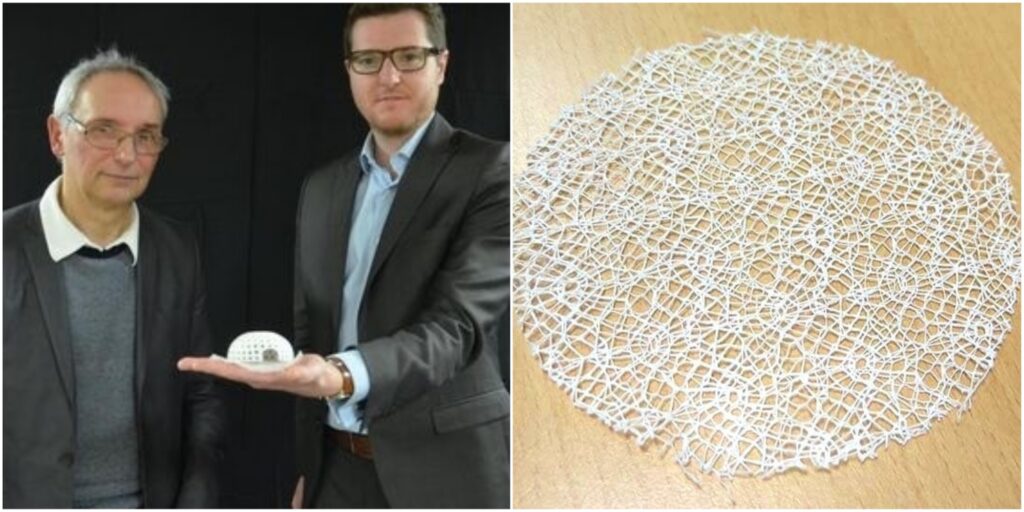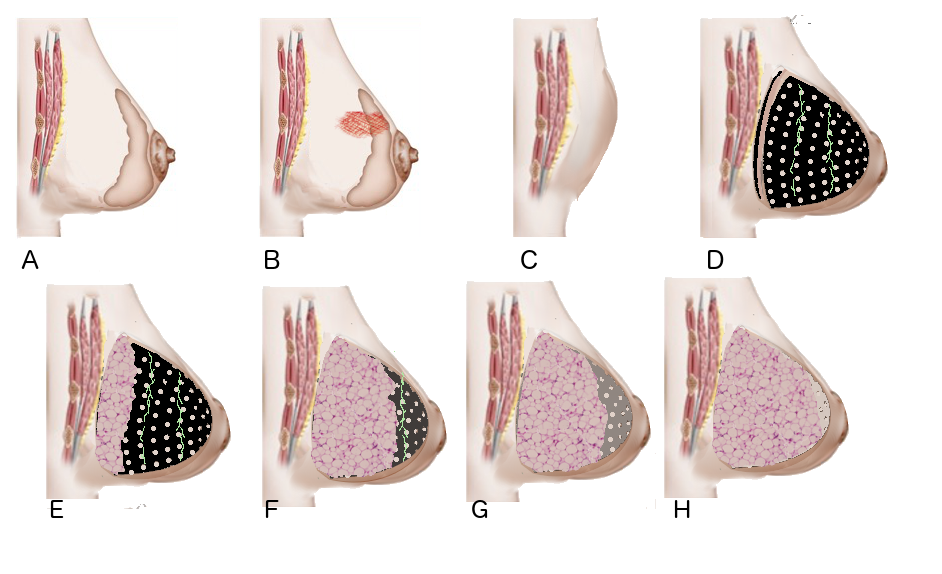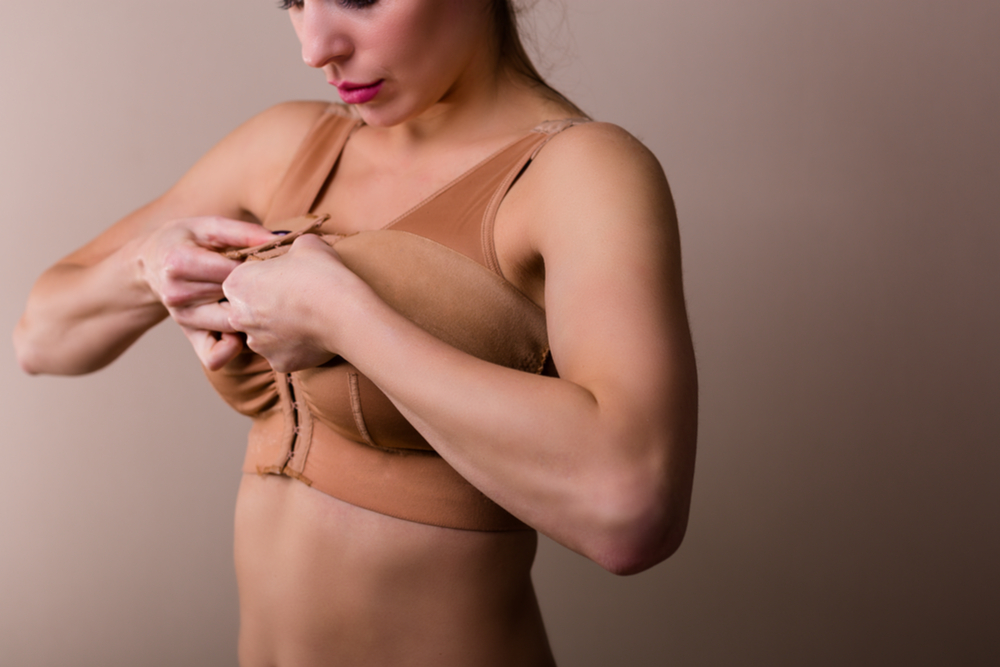- Researchers are currently developing new breast implants using 3D printing.
- MATTISSE implants are made of a bioabsorbable shell filled with fat cells.
- The shell is absorbed by the body, leaving only the implanted fat in the breast.
Since physicians first began working on the concept of surgically enhancing the size of breasts in the late 1800s, they have experimented with numerous implant types and surgical techniques.
With the development of silicone implants, breast augmentation has soared in popularity, making it one of the most commonly performed plastic surgery procedures worldwide.
In this article we’ll explore a novel use of 3D-printing technology applied to breast enhancement and augmentation — a procedure that has been a staple of plastic surgery for decades.
What is 3D printing?
3D-printing uses a device that is able to deposit “raw” materials — which can include plastic, metals, or silicone — in a predefined pattern to produce a three-dimensional object. Depending on the printer, the type of material, and other variables, the finished product can be incredibly intricate and accurate to fractions of a millimeter.
The technology has been around since the early 1980s, but only recently has it matured enough to be considered in medical applications.
MATTISSE 3D-printed breast implants
MATTISSE is the name of an implant currently being developed by a team of researchers in France. In contrast to the conventional silicone implants, this technology employs 3D printing with bioabsorbable materials.
The technical name of this implant is Tissue Engineering Chamber (TEC). The researchers working on it have founded Lattice Medical, the company that will market the implant under the name MATTISSE when it becomes market-ready.
Dr. Julien Payen, Founder of Lattice Medical, and Dr. Pierre-Marie Danze, Researcher at the Centre Hospitalier Regional, Lille University in France, received the Théophile Legrand Textile Innovation award in 2017 for their work on the MATTISSE project.
This professional award is a reference for major international textile engineering schools and professionals from the textile industry.

How does it work?
Using MRI (Magnetic Resonance Imaging), precise measurements of the patient’s breast are taken. The projected shape and dimensions of the implant are then calculated and a 3D printer is used to make a shell-like lattice structure in the shape of the desired implant.
This shell is then filled with fat cells from the patient’s own body and surgically implanted into the breast. After about six months, the shell is absorbed by the body, leaving only the implanted fat in the breast.
“The lattice-work is absorbed over time, leaving the fatty tissue to simulate a volumized breast,” says Dr. Manish Shah, a Denver, CO-based plastic surgeon.
The shell structure acts as a guide by lending support to the breast. This allows the fat cells to survive and grow in a defined pattern, producing more natural-looking results. After resorption of the shell, only the fat remains, making it virtually indistinguishable from the original breast texture.
Since MATTISSE involves the implantation of fat cells from the patient’s body, it incorporates a procedure called autologous fat transfer or lipofilling, which can be performed as a standalone operation.
“This combines the best of both worlds: lipofilling of the breast and bioabsorbable implant augmentation,” says Dr. Shah.
 Potential benefits of MATTISSE
Potential benefits of MATTISSE
While traditional breast implants are available in a limited number of shapes, 3D-printed ones can be customized to create a perfect size and shape for the patient, thus producing more aesthetically pleasing results.
MATTISSE implants also aim to avoid some of the complications and side effects that are associated with silicone implants such as implant leaking, contracting, rippling, or rupturing.
Breast lipofilling, when performed alone, is associated with some problems like liponecrosis (fat cell death), which can lead to a somewhat unpredictable outcome. The MATTISSE team hopes that their technique will increase the survival rate of grafted fat.
According to Dr. Payen, a better fitted shape and less inflammation are the main features of their implant. 3D printing also reduces surgery time, since less manipulation is required to fit the implant during the operation.
Why is improving breast implants necessary?
The main focus of developing 3D-printed breast implants is to help women recovering from mastectomy (surgical breast removal) for breast cancer. Traditionally, these patients had only two options for breast reconstruction: silicone implants or autologous reconstructions, which are extensive procedures involving moving tissue from one part of the body (usually the abdomen) to the breast.
While these operations provide much-needed relief for patients, they are not without their faults. Common issues include reactions to the foreign body implant, the need for multiple corrective surgeries, a disappointing aesthetic outcome, as well as high cost.
These procedures can also take several hours, require enough tissue from the donor area, and may take several weeks to months for recovery.
To address these issues, the materials used by MATTISSE are, in theory, more biocompatible than traditional implant materials, and thus have a smaller chance of being rejected by the body. The high degree of customizability should also allow for a more natural-looking outcome.
According to Dr. Payen, the MATTISSE implant will be more expensive than traditional implants. However, when you take into consideration the multiple corrective surgeries often required with traditional procedures, it is expected to be a cost-effective option.
Although it was developed with breast reconstruction in mind, Dr. Payen says that MATTISSE may eventually make its way into cosmetic breast augmentation, which can only happen after the technology is proven to be safe and effective.
Is MATTISSE available yet?
The TEC technology is still in its infancy and is not expected to make its way to general medical practice for a while.
According to Dr. Payen, the research is still in early stages and will not begin clinical trials in patients for at least three years. There is also the issue of ensuring strict compliance with all regulations, which may push back progress even further.
Other companies are working on developing 3D-printed silicone implants which are quite similar to traditional implants, but differing solely in the manufacturing process.
While this can allow a high degree of implant customization for the patient, Dr. Shah questions whether 3D-printed silicone implants will be too firm. Furthermore, It is not known whether these implants will be cost-effective.
The future of plastic surgery
According to Dr. Shah, bioregenerative techniques are increasingly assuming a role in plastic surgery and medicine as a whole. MATTISSE is an example of one such technique in which natural body tissue (fat cells) are used where previously implants and prosthetics were the standard options.
It is hard to say at this point whether MATTISSE or other similarly ambitious projects will transform the status quo in plastic surgery or other fields of medicine. It is, however, a very promising prospect. If it is successful, traditional plastic surgery procedures will very likely still be performed, but patients will have more options to choose from.









